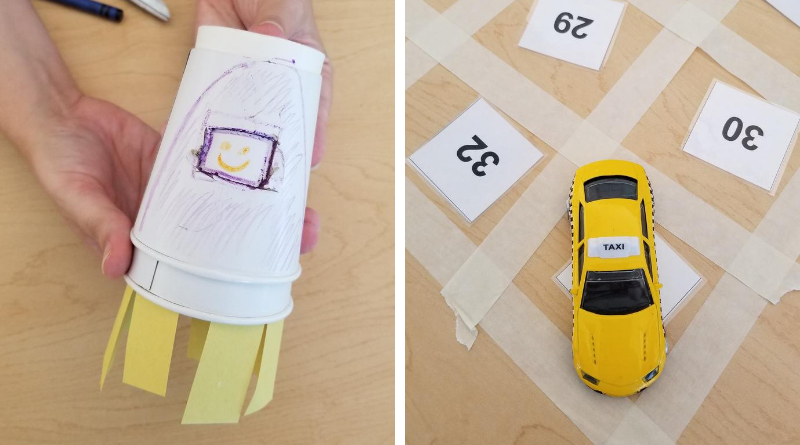
Kindergarten Kickstarter: Social and Emotional Development
Is your preschooler ready for kindergarten? Let’s practice our skills to get along with others.
The Texas Education Agency provides a list of skill domains to help determine if your child is ready for kindergarten. With these programs, we hope to make those standards a little easier to understand and share ways that you can help your child build those skills every day. This post focuses on social and emotional development, a fancy way of talking about the skills we use to get along with others and manage our behaviors. These self-regulation skills help us understand acceptable and unacceptable ways of dealing with our emotions.
Early Literacy Connections
By exploring emotions, your child is learning to share basic emotions and the difference between feelings and behaviors. You’re helping your child learn that feelings are okay, but behaviors might not be. Talking about feelings helps your child learn to identify them, while also building the vocabulary needed to express them. Modeling facial expressions is one way to help your child understand the context of common emotions.
By following directions, your child is learning to keep their attention on a specific task until it is done – something we need to do often as grownups! Use multi-step directions to help your child practice concentration and memory. These are important skills in getting ready to read, but they also help us regulate our behaviors.
Supplies
Below is what you will need for our two activities:
| Emotion Changing Paper Cup Octopus | Map Game |
| Two paper cups* | Masking/Painters tape** |
| Craft knife or scissors | Number cards or sticky notes |
| Markers | Direction list |
| Paper scraps or pipe cleaners | Toy (optional) |
| Masking tape or glue |
**can use chalk if outside
Instructions
Emotion Changing Paper Cup Octopus

- Take one paper cup and draw an octopus on it. It should take up most of the cup. The bigger your octopus, the easier it is to add faces.
- Cut a rectangle in the center of the face. The larger your rectangle, the more space you’ll have to make each face.
- Insert a blank cup into the octopus cup.
- Trace rectangles (through the hole) onto the inner cup. Rotate the cup and repeat. Trace rectangles until you have gone completely around the cup.
- Remove the inner cup and draw a face on each rectangle. Try to make faces that represent common emotions.
- Add legs to the inner cup. You can use scraps of paper or pipe cleaners.
- Put the two cups back together again, with the faces inside the body. Rotate the bottom cup to show a new face.
- Practice identifying and naming each emotion. Talk about reasons why someone might have that emotion and what you can do about each feeling.
Map Game

- Lay out the grid. Make the squares large enough for a child to easily stand inside. Or, reduce the grid to the size of a toy that your child can easily move through each square.
- Have your child start at square one. Face the same direction as the numbers.
- Guide your child through the grid with the directions list. Be as specific as possible.
- Practice using counting and directional words. Talk about left, right, forward, and backward. Practice counting, too! For added challenges, set a time limit or attempt more physically demanding positions, like balancing on one foot.
Review
Talk to your child about the differences between their feelings and their behaviors. Help your child understand what is okay and what isn’t: it’s okay to feel excited, but you can’t jump off the furniture. Then, try talking about your feelings or the feelings of book characters. Why do you think they are feeling that way? Have you ever felt that way? What can you do about it?
Encourage your child to self-regulate their behaviors. Let your child pick what activity you do next and encourage them to stick with it until the activity is done. If your child is having a hard time staying focused, praise their efforts, be encouraging, offer help, or suggest new ideas.
Using multi-step directions throughout the day will help your child practice concentration and memory. Balance your quiet and active time. Routines help your child understand when it is okay to be noisy and active, and when it is time to be calm and quiet.
Continue Learning




